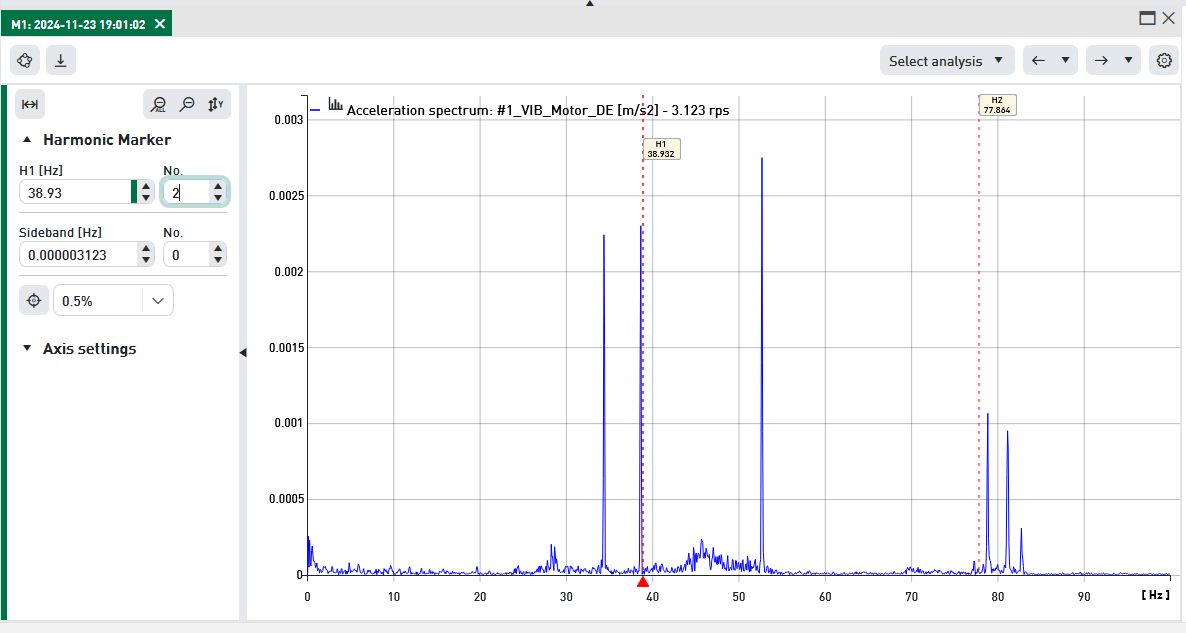FFT (Fast Fourier Transformation) analysis is a frequently used method of identifying mechanical problems. Diagnosing faults on machine components using FFT is not covered by this document, as it goes significantly beyond the document’s scope. The following figure shows an example of an FFT analysis.
Easy example of FFT analysis
Let us assume there is an imbalance problem on a motor shaft, which rotates at 600 revolutions/minute (= 10 revolutions/second). Analysis of the vibration acceleration using FFT enables a significant peak to be detected around 10 Hz. On a motor with no imbalance, this peak would be much less pronounced.
The FFT analysis can be performed both in the FFT spectrum for the vibration velocity and in the FFT spectrum for the vibration acceleration. In the FFT analysis, the FFT is displayed in orders of the shaft speed. Thus, at a rotation frequency of 10 Hz the 5th order represents a frequency of 50 Hz. The order on the X-axis must always be multiplied by the rotation frequency to obtain the actual frequency.
Representation using orders of the shaft speed has proven very effective for damage diagnosis, as it enables harmonic or rotation frequency to be identified very easily.
